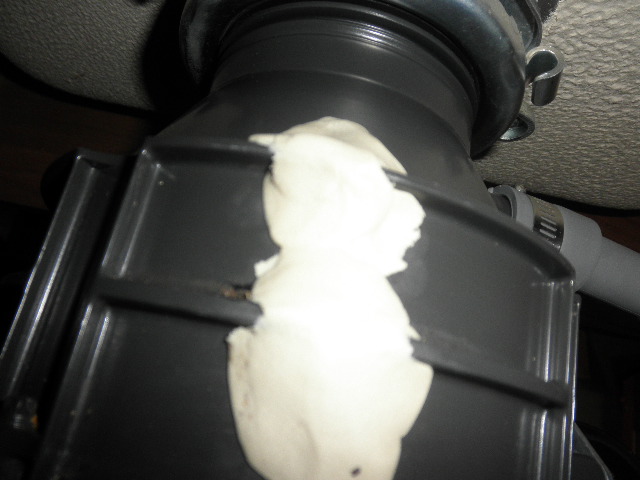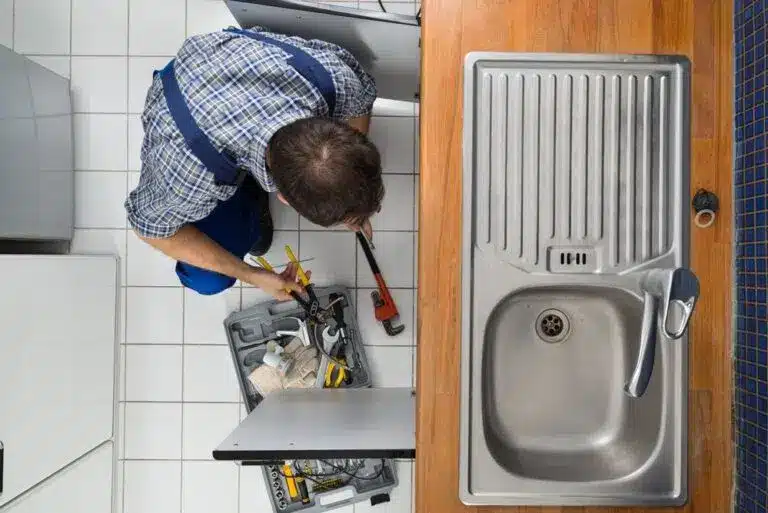Helpful Techniques for Repairing a Dripping Garbage Disposal
Helpful Techniques for Repairing a Dripping Garbage Disposal
Blog Article
Just about everyone will have their own individual ideas involving Tips on Fixing a Leaking Garbage Disposal.

Garbage disposals are vital kitchen area home appliances that aid in getting rid of food waste effectively. Nonetheless, a dripping waste disposal unit can be an irritating and untidy trouble to manage. Luckily, several leaks can be fixed easily with a couple of basic actions. In this post, we will go over exactly how to fix a dripping waste disposal unit successfully.
Intro
Waste disposal unit are installed under kitchen area sinks and are designed to shred food waste right into smaller sized items, enabling it to travel through the pipes system conveniently. While these tools are typically dependable, leakages can happen in time as a result of wear and tear, loose connections, or damage to the device.
Step-by-Step Guide to Repairing a Leaking Garbage Disposal
Shut off the Power
Prior to trying any repairs, ensure that the power to the garbage disposal unit is switched off to prevent the threat of electric shock.
Situate the Leakage
Determine the specific area of the leak and figure out the reason
Tighten up Links
Utilize a wrench to tighten up any kind of loose links in between the disposal system and the plumbing system.
Replace Seals or Gaskets
If the leak is due to used seals or gaskets, remove the old elements and change them with new ones.
Patching Fractures or Openings
For cracks or holes in the disposal system, usage epoxy or an ideal patching material to secure the broken area.
Determining the Source of the Leakage
Before trying to fix a dripping garbage disposal, it is essential to recognize the source of the leakage. This can generally be done through visual evaluation or by conducting straightforward examinations.
Visual Evaluation
Check the garbage disposal device meticulously for any indications of water leak. Pay attention to areas around seals, gaskets, and connection factors.
Evaluating for Leakages
One method to examine for leaks is by running water through the disposal system and looking for any visible indicators of leakage.
Usual Reasons For Leakages in Garbage Disposals
Worn Seals and Gaskets
Seals and gaskets play a vital function in protecting against water from dripping out of the garbage disposal. Over time, these parts can deteriorate, bring about leakages around the disposal device.
Loose Connections
The connections between the waste disposal unit and the pipes system can come to be loose over time, triggering water to leak out throughout procedure.
Splits or Openings in the Disposal Device
Physical damages to the waste disposal unit, such as fractures or holes in the housing, can also result in leaks.
Devices and Products Needed for Fixing a Dripping Waste Disposal Unit
Prior to starting the repair work procedure, gather the essential devices and products, consisting of a screwdriver, adjustable wrench, plumbing professional's putty, replacement seals or gaskets, and epoxy or patching product for fixing fractures or holes.
Testing the Garbage Disposal After Fixing
When the repair work is full, evaluate the garbage disposal by running water through it to ensure that the leak has actually been resolved.
Preventive Maintenance Tips to Stay Clear Of Future Leakages
To prevent future leakages, it is necessary to execute routine upkeep on your waste disposal unit. This includes maintaining it clean, staying clear of placing non-food items or hard things down the disposal, and periodically looking for leaks or other problems.
Verdict
In conclusion, dealing with a leaking waste disposal unit is a fairly uncomplicated process that can be completed with fundamental devices and products. By adhering to the actions outlined in this article and practicing preventive upkeep, you can keep your waste disposal unit in good working problem and stay clear of pricey repair services in the future.
HERE’S HOW TO FIX YOUR GARBAGE DISPOSAL
WHAT TO DO IF SOMETHING IS STUCK IN YOUR GARBAGE DISPOSAL
If the impeller won’t turn, there’s probably something stuck in the disposal. It could be a steak bone or peach pit, although plumbers report pulling all sorts of inappropriate objects out of disposals, such as bottle caps or aluminum foil. Make sure power to the disposal is off, and look inside to see if you can see the source of the jam.
Never stick your fingers in a disposal. Pull out anything you see with tongs or pliers.
If the disposal still won’t work, it may be time to call a plumber or consider buying a new disposal. GEM Plumbing & Heating is here for all of your garbage disposal needs.
WHAT TO DO IF YOUR GARBAGE DISPOSAL DRAIN IS CLOGGED
Take everything out from underneath your sink and put a bucket or other container under your disposal to catch any water that drains out. Disconnect your disposal from the power supply. If it’s plugged into a wall outlet, unplug it. If it’s hardwired into an electrical box, go to the electrical panel and turn off the breaker for the disposal. Pour ¼ cup of baking soda into the drain, followed by ½ cup of white vinegar. Give the solution a few minutes to fizz and do its work. Look into the disposal with a flashlight to see if you can see an object that might be causing the clog. If you see it, remove it using tongs or pliers. MORE TIPS ON DEALING WITH A CLOGGED GARBAGE DISPOSAL
Never use drain cleaner in a garbage disposal. It can damage the plastic parts inside the disposal. You can also be splashed with the caustic liquid while working to clear the clog. Beware! Never stick your fingers into a garbage disposal. Trust us — not a good idea. In many instances, your dishwasher drains through your garbage disposal. This allows the disposal to grind any large food particles that may be drained out of your dishwasher. There are some jurisdictions, however, where the plumbing code prohibits such a connection. WHAT TO DO WHEN YOUR DISHWASHER DRAINS THROUGH THE DISPOSAL
Run some water in the sink so your plunger has at least a ½-inch of water to create a seal and plunge vigorously up and down several times. You may need to repeat this several times. Run hot water down the drain to clear any residue that remains.

I hope you liked our topic on Why Is . Thank you so much for spending some time to read through our content. Liked our piece? Please share it. Let another person find it. I value reading our article about Why Is .
Click Here To Read More Report this page